Classiebawn Castle
Houses within 10km of this house
Displaying 12 houses.
Houses within 10km of Classiebawn Castle
Displaying 12 houses.
| House name | Description | |
|---|---|---|
| Streedagh | It is likely that Thomas Jones built a house at Streedagh c 1725. However, the present house dates from the early years of the nineteenth century. In 1906 it was the property of Richard W. Jones and was valued at £18. It is still extant and occupied. |
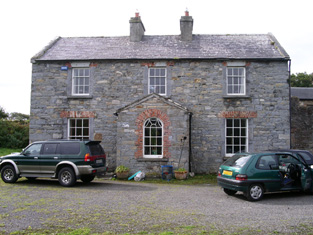
|
| Moneygold | At the time of Griffith's Valuation, Moneygold was leased by the Fawcett family from Viscount Palmerston's estate and was valued at £13. Lewis records it as the residence of the Soden family in 1837. McTernan notes that it was the seat of the family from the early eighteenth century when James Soden leased almost 1000 acres from the Temple estate. In 1906 it was the property of Major G.M. Eccles whose mother was Isabella Soden. The house was damaged in a storm in the early 1960s and subsequently demolished. | |
| Mount Temple | Viscount Palmerston was leasing a property valued at £3 15s to Edward Parke in this townland at the time of Griffith's Valuation. It is estimated that the house now at Mount Temple was built c.1860. McTernan notes that the property was originally part of the Soden estate but was leased to the Parkes in the 1830s. They were to continue in occupation until the 1940s after which Mount Temple was acquired by the Land Commission. The house is still extant but derelict. |
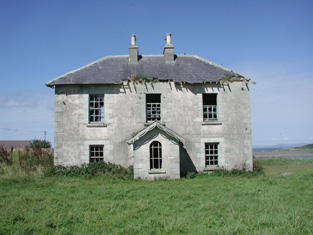
|
| Tynte Lodge | Joseph Tynte was leasing lands from the White estate and later purchased 30 acres of land from Lord Massy (who had inherited that estate) for the building of Tynte Lodge. The Inventory of Architectual Heritage, however, contends that Tynte Lodge was built in the eighteenth century so perhaps Tynte was reconstructing an earlier building. At the time of Griffith's Valuation the property at Tullaghan was valued at £18 and was leased by Tynte to Hugh Montgomery. In 1906 Mervyn Tynte was the owner of the mansion house at Tullaghan valued at £51. |
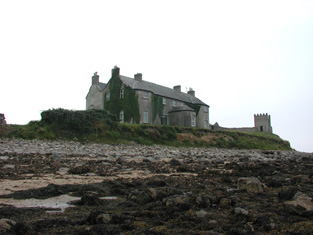
|
| Ward House | At the time of Griffith's Valuation this property was held in fee by James Ellis when the house was valued at £10. It is labelled Ward House on both the 1st and 25-inch edition Ordnance Survey maps. The original house is no longer extant. | |
| Woodville | Described in 1835 as formerly having good offices and a well-managed garden but had a deserted looking appearance at that time. The Irish Tourist Association survey in 1943 recorded that the ruins of Woodville House were located in the townland of Tawly. The house was demolished around 1908 when the estate was divided. | |
| Duncarbry Lodge | At the time of Griffith's Valuation John R. Dickson was the owner of two properties at Duncarbry, barony of Rossinver, one valued at £18 and the other at £10. Lewis records that Rev. Dickson was residing at Duncarbry Lodge in 1837. |

|
| Tullaghan House | At the time of Griffith's Valuation Tullaghan House was in the possession of Joseph P. Tynte who was leasing it from Col.White's estate. Subsequently it became a residence of the Dickson family. It is still extant. |
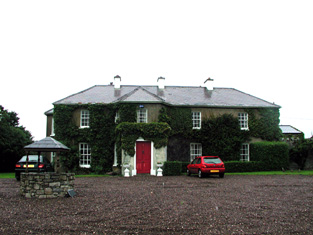
|
| Clogh | In 1906 Sir Jocelyn Gore Booth was the owner of buildings valued at £70 at Clogh, barony of Carbury. There are no building of similar valuation at the time of Griffith's Valuation. | |
| Rindaly Cottage | In 1906 the Ashley estate owned a property at Creevymore, barony of Carbury, valued at almost £9. At the time of Griffith's Valuation this property had been in use as an agriculturalist's house on the Palmerston estate, and leased to John Lynch. McTernan notes that Lynch acted as resident agent and land steward for the estate. A second house, adjacent to the first, was leased, at the time of the Valuation, to Rev.Malachy Brennan and valued at over £8. | |
| Kilkilloge Tower | In 1906 the Ashley estate owned a property at Killkiloge, barony of Carbury, valued at £16. This may be the extant building which was modelled on a medieval look out tower. |
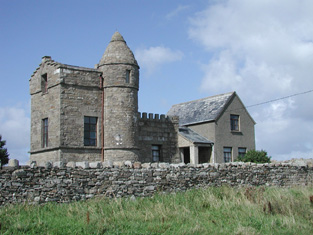
|
| Hollyfield House | At the time of Griffith's Valuation, Patrick Dwyer was leasing the townland of Edencullentagh or Hollyfield from the Gore Booth estate. This included Hollyfield House, then valued at £6. McTernan indicates that Dwyer was employed as a land steward by the estate. The house had a successionof owners thereafter and was in a derelict condition by the end of the twentieth century but has since been restored. |
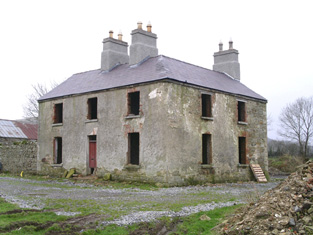
|

